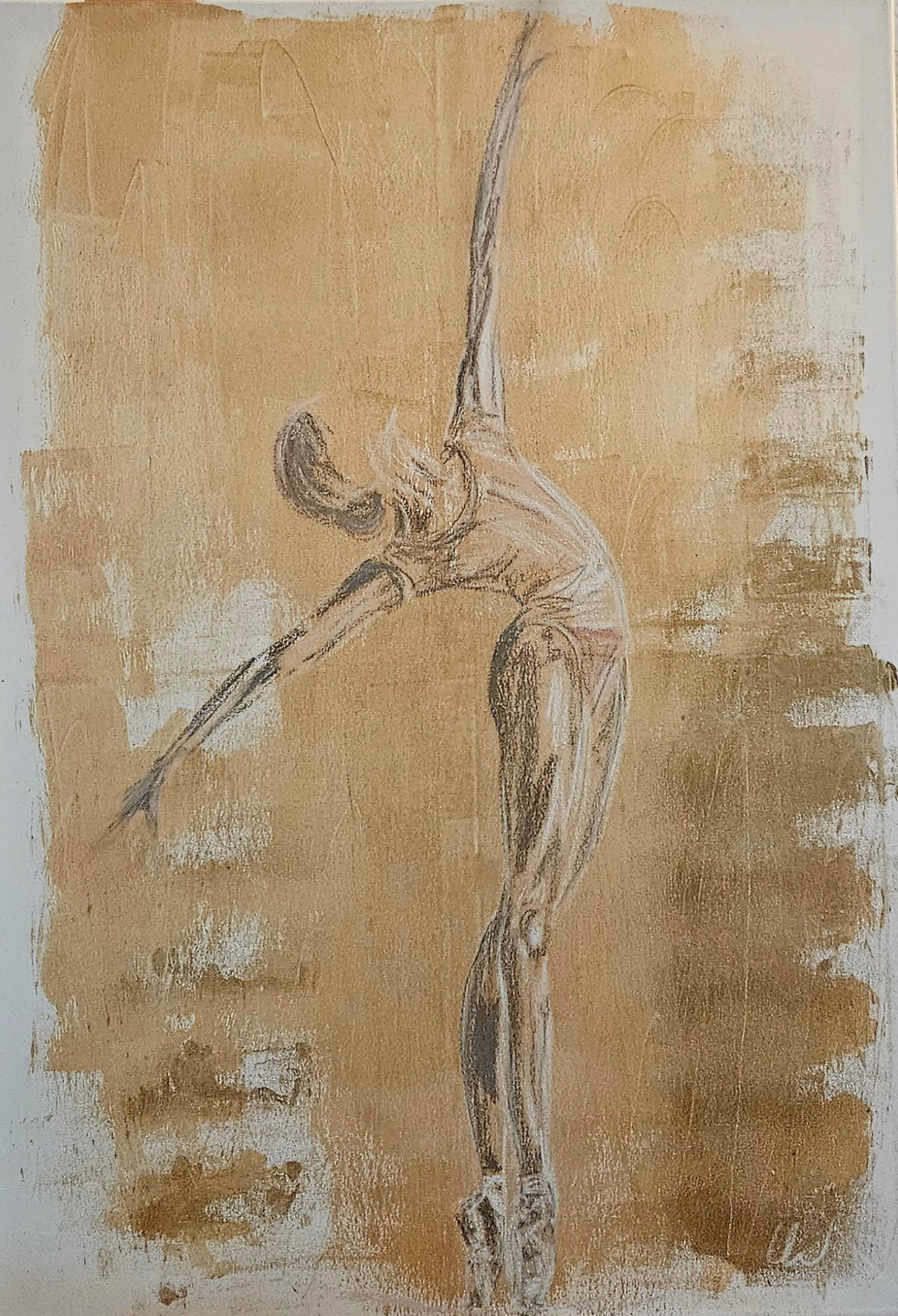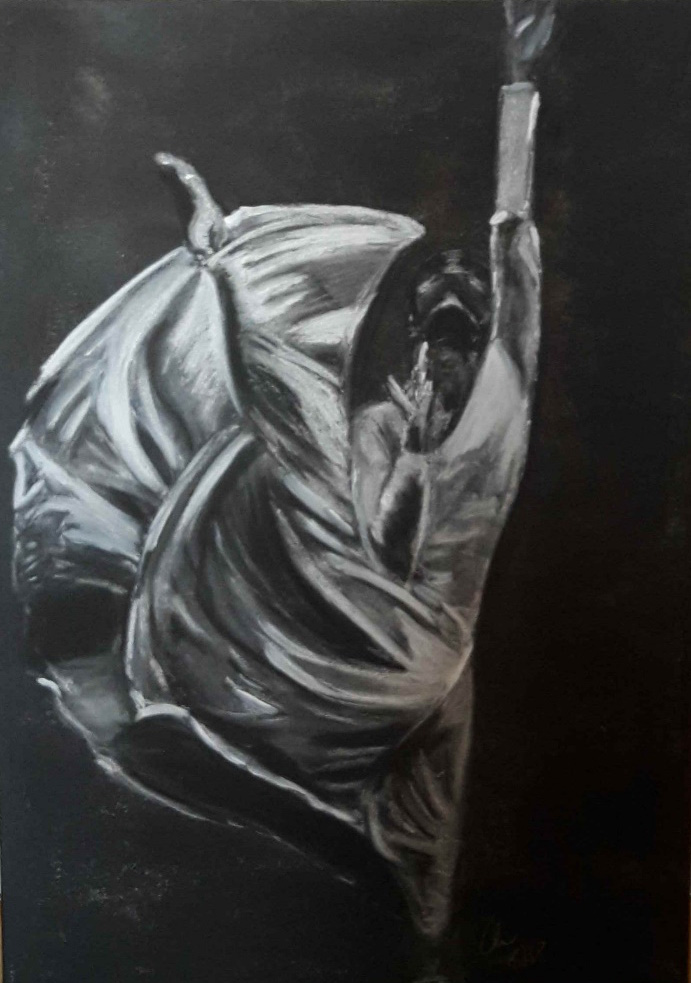Carola Helwing
Year of birth: 1979.
Where do you live: Frankfurt/ Main, Germany.
Your education: Education in dance pedagogy and teaching degree in art for special schools.
Describe your art in three words: Dance, easthetics, on point.
Your discipline: Acrylic and pastel paintings on canvas.
Website | Instagram
Can you tell us about the moment when you decided to combine your passion for dance with painting? What inspired this connection?
After my professional dance education training I started to combine these two creative passions. It was and still is a way for me to handle and assimilate all the experiences and impressions of this intense time. I had and still have the need to deal with dance in another way of creativity beside dance itself.
How does your background in dance influence the way you approach painting? Do you find parallels in the creative processes of both art forms?
I usually get captured by a photograph or a dance performance and the specific emotions it releases on me. So I get an idea of what I want to paint. I have to be in a special mood or flow for it. It’s mostly the same in dancing: it’s kind of needing an inspiration, an idea that wants to be implemented. But it’s also discipline and a kind of routine or training. For both types of creativity the right kind of music is very important to me to get in the flow.
 Carola Helwing | Ballerina, gold
Carola Helwing | Ballerina, gold
Your work captures the energy and emotion of dance performances. How do you go about translating these dynamic movements onto canvas?
I think it’s about the right pose and colours. It’s like taking a snapshot of a dancer or performance: you choose a specific moment and try to capture it. And this snapshot – of a specific pose or a specific arrangement or composition – reflects the chracteristics I want the observer to see in my pictures, such as strenghth, power or grace for example. And the appropriate colours and the interaction between light and shade should emphasize and point out these characteristics.
How important is it for you to capture not only the dancer’s movements but also the intensity and emotions of the performance?
In my opinion the intensity and emotions of a performance are the centerpiece of dance. That’s why I try to figure out the specific chracteristics that represent these emotions and the intensity and translate them into that one pose or composition on my canvas.
Could you describe a specific piece or series that best represents the intersection of dance and painting in your work?
There are several self-portraits that represent different phases of development in my dance and in my painting.
Among these there is a piece called „Begeisterung“ (enthusiasm). The title expresses what I feel dealing with dance and painting. This piece includes my emotions about dance and my own dancing experiences in one strong pose.
 Carola Helwing | Enthusiasm
Carola Helwing | Enthusiasm
Are there certain dance styles or techniques that inspire your paintings more than others? If so, why?
For me there are two dance styles that inspire me the most.
First of all it’s the classical ballett. I grew up with it and it had a great influence on my development in dance. For me it represents characteristics like power, strength and vitality and also grace and a special kind of of fragility. It takes a lot of hard work and discipline to let something look so lightely and easily on stage. That’s fascinating. And it’s transferable to other kinds of art.
The second one is contemporary dance. The characteristics like dynamic movements, momentum, open energy and flow are those I experienced myself and I try to reveal them in my paintings.
The combination of discipline and flow (co classical ballett and contemporary) reflects my painting process and influences my pictures.
Do you ever use live models or specific dance performances as references for your paintings?
Mostly I use photographs of dancers or performances, because dance is so fluid. I take pictures of dance scenes on stage or in training sessions trying to capture exeptional or specific moments and transfer them onto canvas in a second step.

Leave a Reply